Target 14.4 End destructive fishing
By 2020, effectively regulate harvesting and end overfishing, illegal, unreported and unregulated fishing and destructive fishing practices and implement science-based management plans, in order to restore fish stocks in the shortest time feasible, at least to levels that can produce maximum sustainable yield as determined by their biological characteristics
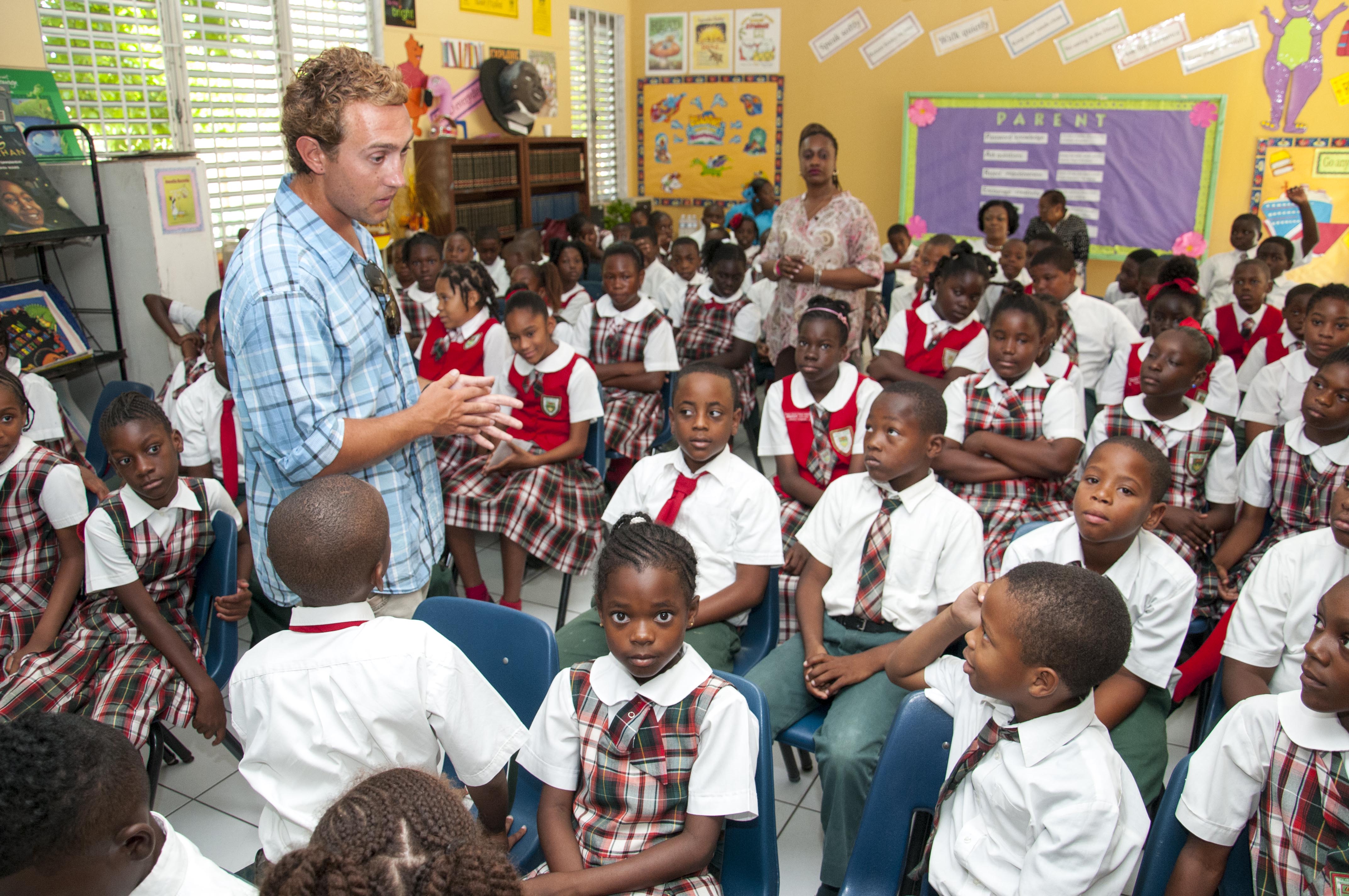
Shark Team Outreach
The work by FIU’s Shark Team has helped guide policy and serve as the underpinning for management decisions all across the world. But the policies are only as effective as their implementation. That is why the team of researchers is engaging in initiatives that go beyond supporting conservation and management. They are working on the frontlines, in local communities and educating the public to help ensure policy is put into action. Biologist Mark Bond has spent much of his career educating others on the plight of sharks — from young schoolchildren in South Florida and the Caribbean to environment ministry officials in other parts of the world. He is engaged in a grassroots initiative, traveling to rural villages and speaking with local fishing communities about the importance of protecting young oceanic whitetips within the Windward Passage between Haiti and Cuba. The goal is to make the fishermen a key part of saving the sharks. Many had seen or caught young whitetips. Few had ever saved one. Today, releasing whitetips that are inadvertently caught in fishing operations has become a standard practice in Haiti.
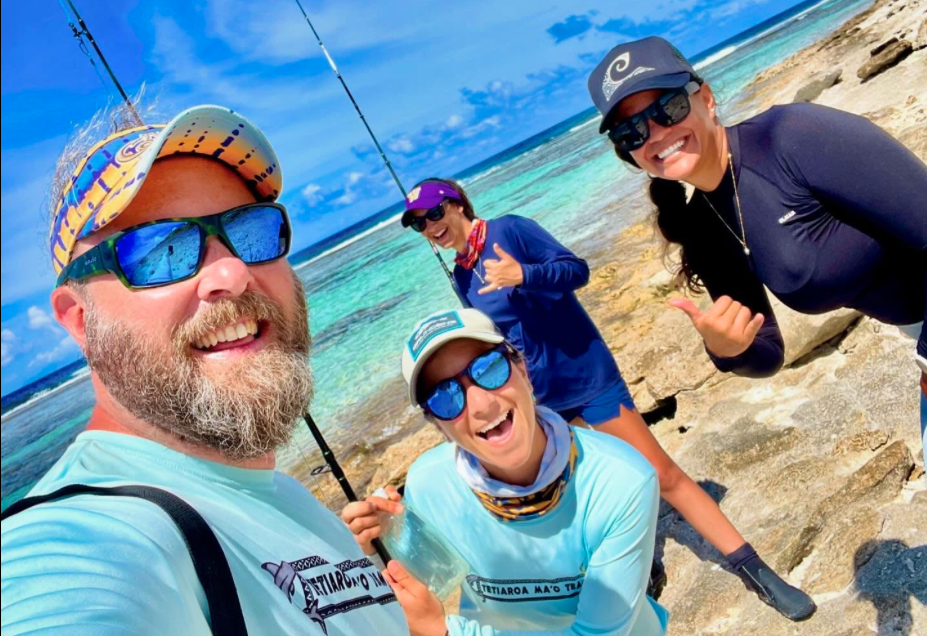
French Polynesia Community Outreach
A lack of public awareness can often be one of the biggest challenges facing conservation. For more than a decade, FIU scientists have worked in the world’s largest shark sanctuary, which is located in French Polynesia. These waters are an important economic engine for the local communities. The scientists recently evaluated local knowledge about sharks and the nearby shark sanctuary. What they found is designated protected areas are only effective if local stakeholders are aware of the rules and of the actual value of the sharks themselves. In the case of French Polynesia, only a quarter of those interviewed were aware of the rules of the sanctuary and fewer had any meaningful knowledge of the ecologic, economic and cultural value of sharks. It’s a major deficit in the plight to protect these important species. That’s why public outreach and engagement is a core function of FIU’s Shark Team, dividing their time among the field, the lab, the classroom and a variety of engagement opportunities.
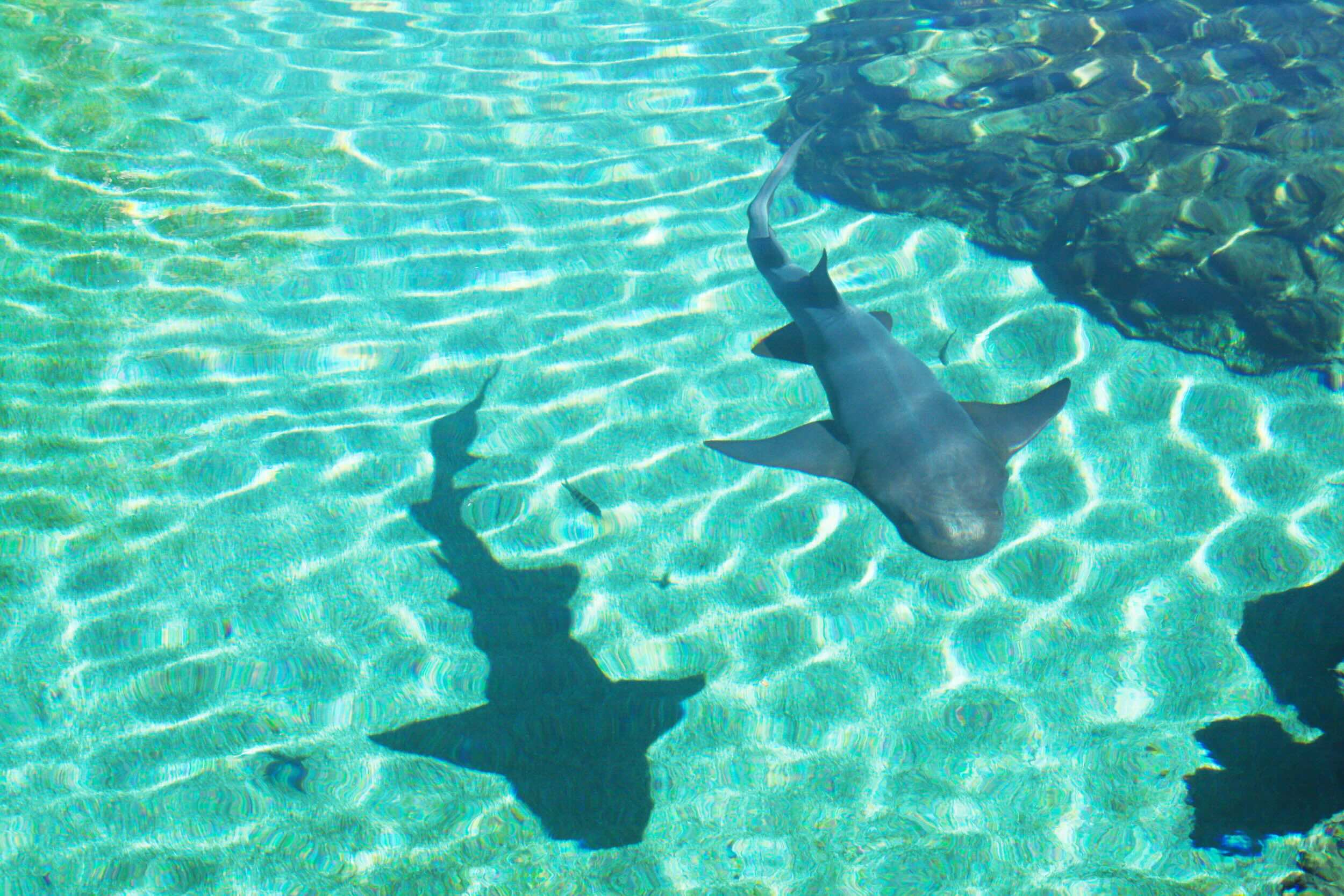
Dominican Republic Community Outreach
When no sharks were detected off the coast of the Dominican Republic, FIU scientists shared critical data from Global FinPrint research with local community members and officials. The country’s Ministry of Environment and Natural Resources issued a ban on fishing and trading of all sharks and rays in its jurisdictional waters as a result of our efforts. Since then, country officials continue to work with our scientists to monitor shark and ray activity with the goal of incorporating scientific data in all future management decisions.

Belize Community Outreach
In nearby Belize, more than 20 species of rays are known to populate local waters. These close relatives of sharks are at even greater risk of extinction than sharks, yet few sanctuaries include protections for rays. Data from Global FinPrint is helping to change that. FIU scientists found thriving populations of rays in the waters along Belize and upon sharing the data with local officials, the Belize Fisheries Department established the world’s first ray sanctuary to help protect local populations including the critically endangered smalltooth sawfish and endangered Ticon cownose. Since then, Belize officials have established a shark-fishing ban in the waters surrounding three atolls after additional FIU research documented a 10-year population decline.

Global Sustainable Tourism
FIU offers a bachelor’s degree in sustainable operations in the tourism industry, its impacts on the planet, and the increasing demand for a more sustainable approach to managing hospitality and tourism businesses. This unique, fully online program is offered by the Chaplin School of Hospitality and Tourism Management in collaboration with the Department of Earth and Environment in the College of Arts, Sciences & Education. Students pursuing this degree acquire the knowledge and tools needed to become industry leaders in the management of sustainable tourism standards that will help protect the world’s natural and cultural resources and maintain them intact for future generations. Students will learn to apply these skills and lead through advocacy, conservation and community partnerships. Topics covered include socioeconomic, environmental and cultural impacts with respect to responsible business practices and local governance. In a nutshell, the overarching thrust of the program is to teach students how tourism can adapt to and mitigate climate change and become a key sector in the transition to low-carbon economies.
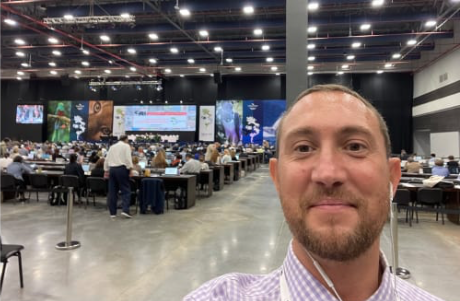
Scientific Outreach to Educate Global Communities
Data from FIU research contributed to a recent groundbreaking decision by world governments to award increased protections to 54 species of sharks during the Conference of the Parties of the Convention on the International Trade in Endangered Species of Wild Fauna and Flora (CITES). FIU scientists call this the most significant step toward improving global shark management that countries have taken, ensuring international shark trade is regulated and traceable.The research was also used to update the status of four species to more threatened categories on the International Union for the Conservation of Natures (IUCN) Red List. Researchers from multiple FIU Marine Science labs also supported listings passed by CITES in 2016.

DNA Detectives and the Shark Fin Trade
FIU marine scientists are using DNA detective work to uncover the mysteries of the global shark fin trade. They have genetically analyzed more than 12,000 fin samples to determine the species most commonly found in markets in Hong Kong and China. Then, they’ve used DNA from the fins to actually track where the sharks were caught. They are using this information to pinpoint where endangered species face the highest risk of overexploitation and possible extinction from illegal fishing practices. These researchers are also investigating where smaller shark fins are coming from. Hundreds of thousands could fit in a single sack. Most of these fins — small enough to fit in the palm of a hand — come from juvenile sharks. Genetically tracking them can pinpoint nursery areas where sharks are in the gravest danger. The scientists hope their efforts can end a cycle of overexploitation of species that are targeted at multiple stages of the life cycle. To date, their efforts have resulted in the interception of illegal shipments of fins, european eels, matamata turtles and other marine species both in Asia and South America.
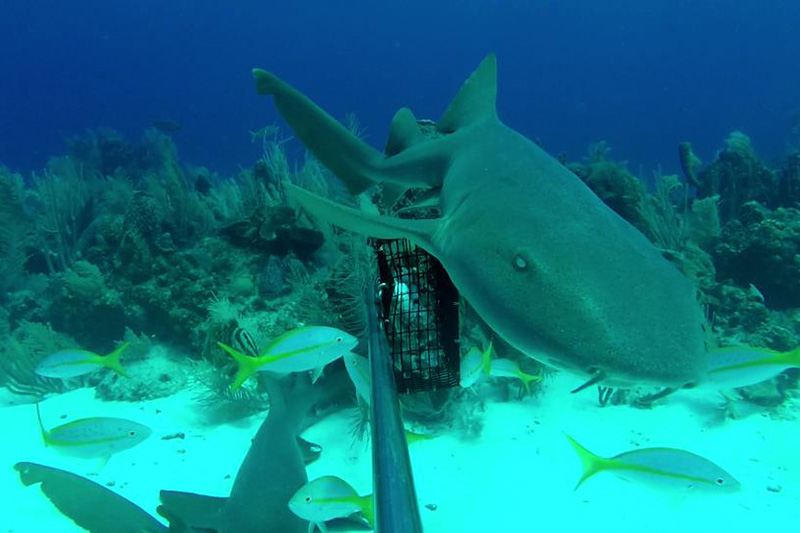
Global FinPrint
FIU led Global FinPrint, an international effort that has identified the last remaining stronghold of sharks and rays throughout the world. More than 120 scientists from 89 universities, aquariums and non-profits collected footage across nearly 400 reefs to survey the world’s reef shark populations. The data provides the first true assessment, showing sharks are functionally extinct along 20 percent of all reefs. The research also identified key strategies to reverse these declines. The Global FinPrint team also identified conservation measures that could lead to recovery of these iconic predators. It is a critical first step in protecting and restoring shark and ray populations all across the globe. Even before this data was released, FIU researchers provided preliminary findings from Global FinPrint to officials in Belize and the Dominican Republic, which led to Belize establishing a nationwide ray sanctuary and the Dominican Republic instituting a nationwide shark-fishing ban.
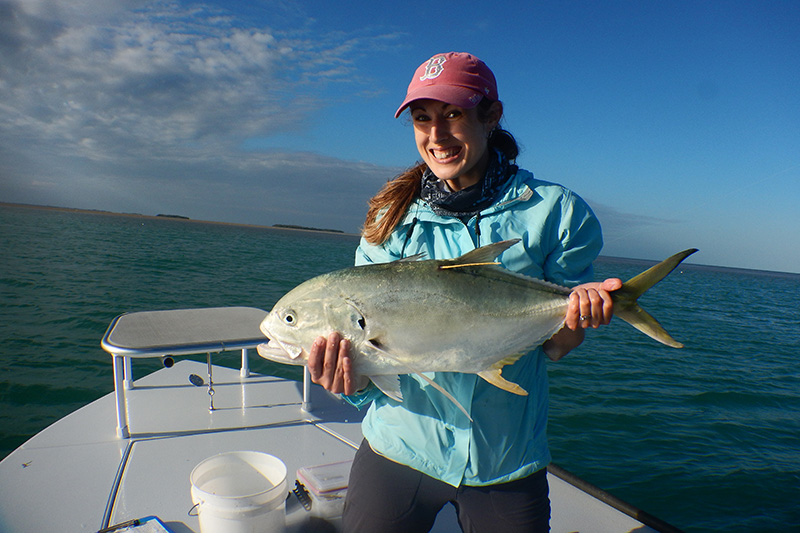
Crevalle Jack
Crevalle Jack is an important apex predator found throughout the tropical and temperate waters of the north Atlantic Ocean. The species is targeted by both commercial and recreational anglers but, in recent years, fishermen reported fewer catches of this unregulated species. Researchers in the FIU Institute of Environment are using a combination of research and angler knowledge to determine spatiotemporal patterns of Crevalle Jack abundance and assess movement and migration patterns. In partnership with the Lower Keys Guide Association, the goal is to determine where and when Crevalle Jack populations began to decline, assess possible factors that may be contributing to the decline, and determine the spatial scale of management that will be necessary to conserve and restore the population. By collaborating with recreational anglers and state management, the research team hopes to develop a sound management plan for the data-poor Crevalle Jack fishery that will successfully restore and conserve this important fish species.
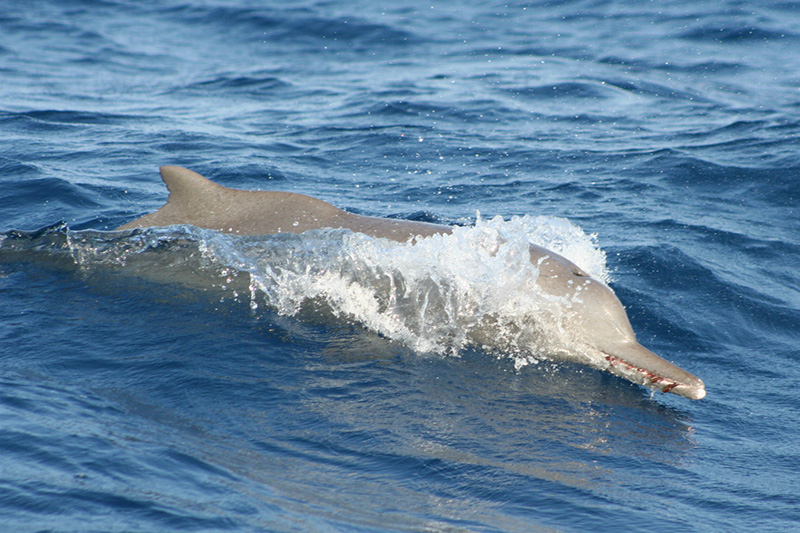
Bycatch
In a study of the fishing methods used by semi-industrial tuna gillnet fisheries in Pakistan, an international team led by FIU Institute of Environment researcher Jeremy Kiszka determined dolphin bycatch was reduced by 78.5 percent when gillnets were deployed about 6 feet below the surface. Given the estimated 100,000 whales and dolphins accidentally caught each year in gillnets in the Indian Ocean, the life-saving potential is monumental. This research also showed the lower gillnets did not negatively impact the fishermen’s yield of tuna. The magnitude of bycatch is overlooked in many regions of the world, particularly in developing countries, and actions to mitigate bycatch are still rare in most fisheries. This new information provides an easy and effective solution that adds no additional costs for the fisherman.

Advocating for No-Take Zone in Colombia
Recent FIU research has shown critically endangered scalloped bonnethead sharks do not often travel outside of their immediate surroundings, which has led the scientists to call for a “no-take zone” off the coast of Colombia. They want to prohibit the capture or removal of these small hammerheads. Working with local stakeholders and educating community activitists, the scientists are providing strategies for people to protect the imperiled species while also safeguarding the needs of the community.